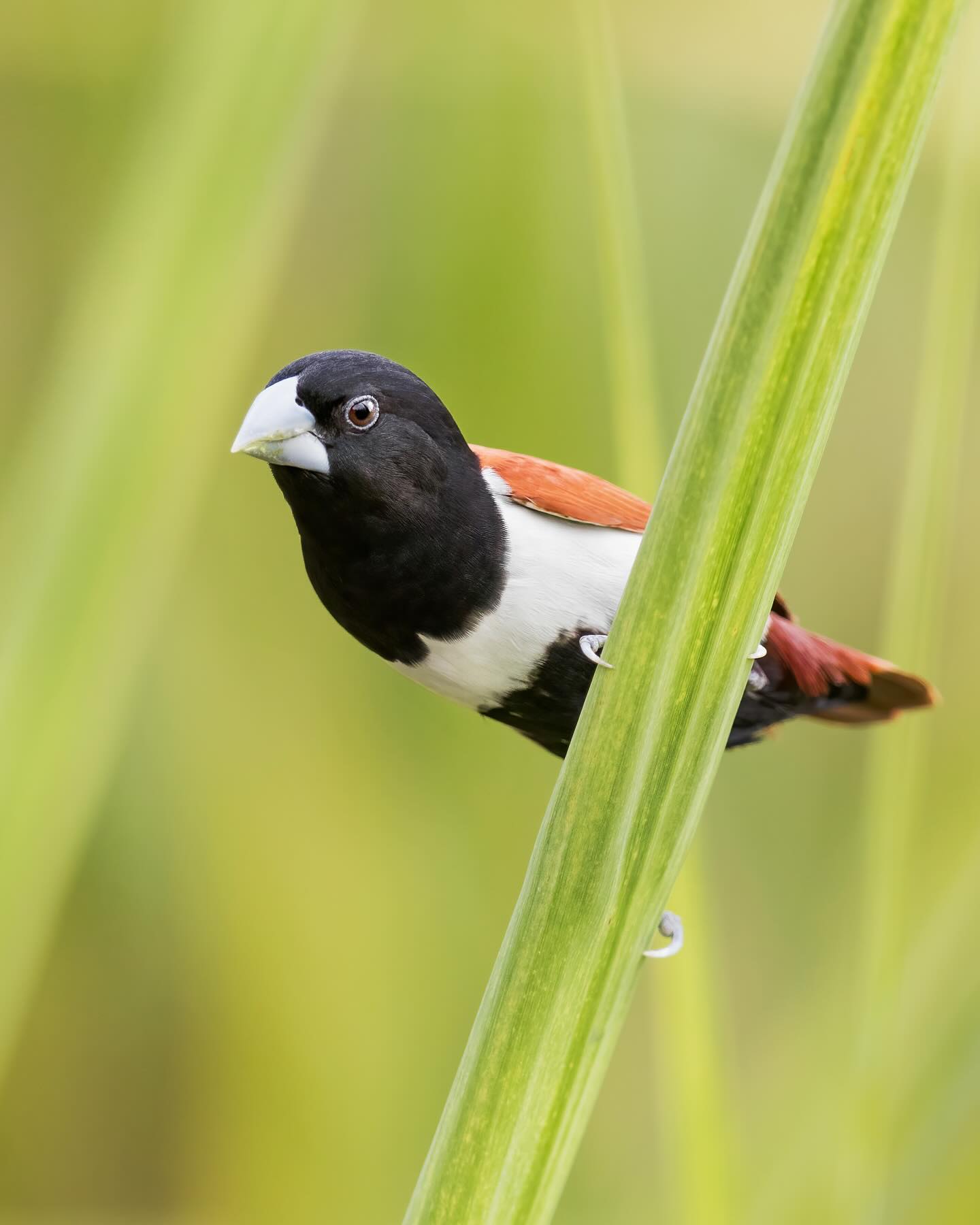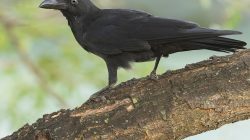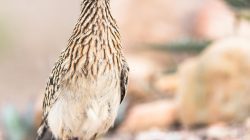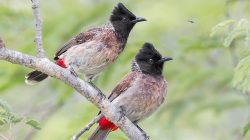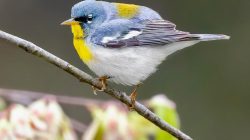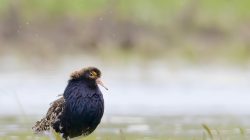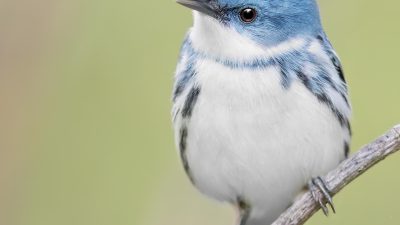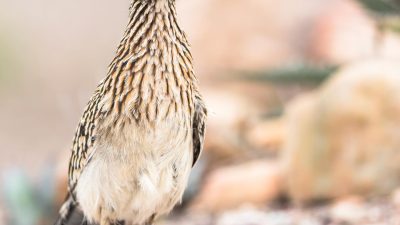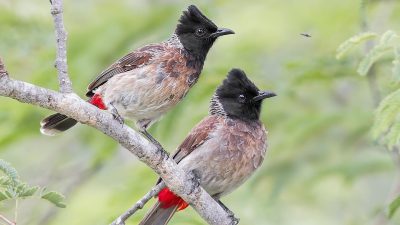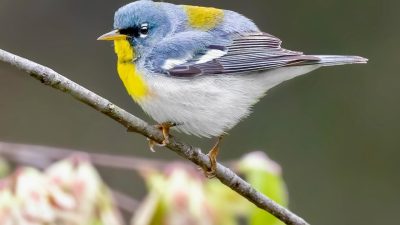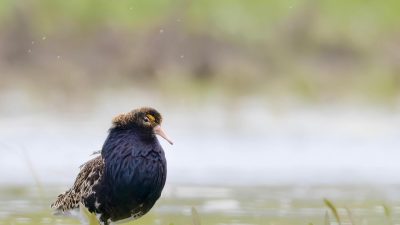Tricolored Munia (Lonchura malacca): A Detailed Exploration of Its Origin, Appearance, Distribution, and More
Diajar.net – The Tricolored Munia (Lonchura malacca), also known as the Malaysian Munia, is a captivating species of finch found primarily in Southeast Asia. Its striking colors, social behavior, and adaptable nature have made it a subject of interest for both ornithologists and bird enthusiasts alike. In this article, we will delve into the origins, physical characteristics, habitat, diet, population, and conservation status of this remarkable bird.
Origin of Animal Name
The name Lonchura malacca derives from both its scientific and common nomenclature. The genus Lonchura is a large group of small to medium-sized birds, commonly referred to as munias or grass finches. The genus name Lonchura is derived from the Greek word lonche, meaning “a spike” or “point,” referring to the pointed shape of the bird’s tail feathers.
The species epithet malacca is taken from the Malacca Strait in Southeast Asia. This naming reflects the bird’s historical association with the region, as the Malacca Strait has long been a hub for trade, migration, and biodiversity. The Tricolored Munia’s common name is also a nod to the distinctive tricolored plumage of the male, which sets it apart from other finch species.
Appearance
The Tricolored Munia is a small, colorful bird that measures around 10 cm (4 inches) in length, making it a compact member of the finch family. The adult male displays a striking tricolored plumage, which includes rich chestnut brown, white, and black tones. Its head and upperparts are predominantly dark brown or black, with a glossy, iridescent sheen. The underparts are typically white or light beige, creating a sharp contrast with the darker tones on its back and head.
The female Tricolored Munia, in contrast, is more muted in color. While she retains some of the same tones, her plumage is generally more uniform, lacking the bold color contrast seen in the male. This sexual dimorphism is a characteristic found in many bird species, with the males using their vivid coloring to attract mates.
A distinctive feature of the Tricolored Munia is its short, conical beak, which is well-suited for the seeds that form the bulk of its diet. Its eyes are small and dark, contributing to the bird’s overall compact and delicate appearance. The tail is short but pointed, and its wings are rounded, allowing for quick and agile flight, especially when escaping predators or traveling between feeding grounds.
Distribution
The Tricolored Munia is found across a broad geographical region in Southeast Asia, particularly in Malaysia, Singapore, Thailand, Indonesia, and southern Vietnam. It prefers a wide range of habitats, from lowland forests to grasslands, and can be seen in both rural and urban areas. The species is common in agricultural lands, especially in rice fields, where it finds ample food and suitable nesting sites.
Interestingly, the Tricolored Munia is also a common pet bird in many parts of the world, particularly in the Philippines and Thailand, where they are often kept as companion animals due to their vibrant plumage and active, social nature. While their wild populations thrive in their native regions, their spread to other parts of the world highlights the bird’s adaptability to human-dominated landscapes.
Geography
The geographical range of the Tricolored Munia extends throughout the Southeast Asian peninsula and the Indo-Malay region. Specifically, they inhabit regions that experience a tropical climate, with warm temperatures, high humidity, and abundant vegetation. These birds are often seen in grasslands, savannas, open woodlands, and cultivated areas, such as rice paddies or the edges of forests. The adaptability of the Tricolored Munia to both rural and urban environments is a testament to its resilience and ability to thrive in different ecological niches.
In the wild, the birds are typically found in elevations ranging from sea level to about 1,000 meters (3,280 feet) in certain areas, but they do not venture into high-altitude regions. The regions where the Tricolored Munia is found are characterized by abundant rainfall, making these areas ideal for the bird’s survival. The wet environment, particularly during the monsoon season, provides a wealth of seeds and grasses, which are a significant part of the bird’s diet.
Habits and Lifestyle
The Tricolored Munia is a highly social bird, often seen in flocks, particularly during the non-breeding season. These flocks can range from small groups of five to larger gatherings of up to 30 birds. The species exhibits strong communal behavior, which is typical for many finch species. They are often observed foraging together, chirping, and engaging in playful activities. The birds are non-territorial, which means that they do not defend specific areas from other individuals or species.
While the Tricolored Munia is primarily diurnal (active during the day), it becomes less active during the cooler parts of the day, resting in dense vegetation or trees. They tend to sleep in thickets or tall grasses at night, where they are relatively safe from predators. This communal behavior extends to their nesting habits as well, as the birds often nest in large colonies, with multiple pairs of birds occupying the same area.
During breeding season, the male Tricolored Munia becomes particularly active, singing and performing display flights to attract females. These displays typically involve the male flying in an arc and puffing out his chest to showcase his colorful plumage. The females, who tend to be more reserved, select their mates based on these displays and the overall health of the male.
Diet and Nutrition
The diet of the Tricolored Munia is primarily granivorous, meaning they feed mainly on seeds. They are particularly fond of grasses, millets, and rice, but they will also consume seeds from a variety of other plants. The species has adapted to agricultural landscapes, where crops like rice provide a steady food source. In the wild, they will forage for a range of grass seeds, as well as some fruits and occasionally insects, particularly during breeding season when additional protein is needed for reproduction.
The birds are excellent foragers, often seen hopping from plant to plant, pecking at seeds and sometimes plucking fruit. Their strong, conical beaks are perfectly suited for cracking open seeds and extracting the nutritious contents. They are also known to consume small amounts of nectar, which may supplement their diet in certain regions.
In captivity, the Tricolored Munia is often fed a diet that includes millet, grass seed mixtures, and specialty bird pellets. Their dietary needs are relatively simple, but they require a constant supply of fresh water and seeds to maintain their health.
Population
The Tricolored Munia is classified as a species of least concern by the International Union for Conservation of Nature (IUCN). The population is widespread and stable in much of its native range, thanks to the bird’s adaptability and success in human-altered landscapes. However, the exact population size is difficult to quantify, as the bird is commonly found in both wild and captivity settings, making it challenging to distinguish between the two.
In the wild, these birds are abundant in lowland areas and agricultural regions, with some estimates suggesting that there are several million individuals in Southeast Asia alone. Their high reproductive rate and the abundance of suitable food sources in cultivated areas have contributed to their large and stable population.
Number of Populations
The Tricolored Munia does not exhibit significant population fragmentation, as the bird is found across a broad geographic range. However, local populations may vary in density depending on habitat quality and availability of food sources. In areas where agriculture and urbanization have transformed the landscape, the bird has managed to thrive, benefiting from the seeds found in crops like rice and millet.
There is no substantial evidence suggesting any drastic decline in the species’ population, although some localized populations in urban areas may face pressure from habitat loss and increased competition from other species. In contrast, in rural and more remote areas, the bird’s population remains robust.
Conservation
Despite its stable population and classification as a species of least concern, the Tricolored Munia faces some threats. Habitat destruction, primarily due to deforestation and urbanization, is the most significant concern for the species. As agricultural lands expand and cities encroach on their natural habitats, the availability of suitable nesting sites and food sources may decrease.
In some areas, the Tricolored Munia is also subject to capture for the pet trade, though this does not appear to have significantly affected their overall population. Conservation efforts have focused on preserving the bird’s natural habitats, as well as promoting sustainable agricultural practices that allow the species to coexist with human populations. Some countries, such as Malaysia and Thailand, have implemented local measures to protect the bird’s habitat, ensuring that there is sufficient space for both wildlife and human activities.
The Tricolored Munia’s success in adapting to human environments has allowed it to flourish despite these challenges. However, continued monitoring of its population and habitat is essential to ensure its long-term survival.
The Tricolored Munia (Lonchura malacca) is a vibrant and adaptable bird, known for its striking plumage, social behavior, and resilience in the face of environmental changes. Its ability to thrive in both rural and urban landscapes makes it an exemplary species of adaptability. While the bird’s population remains stable, ongoing conservation efforts are needed to protect its natural habitats from further degradation.
